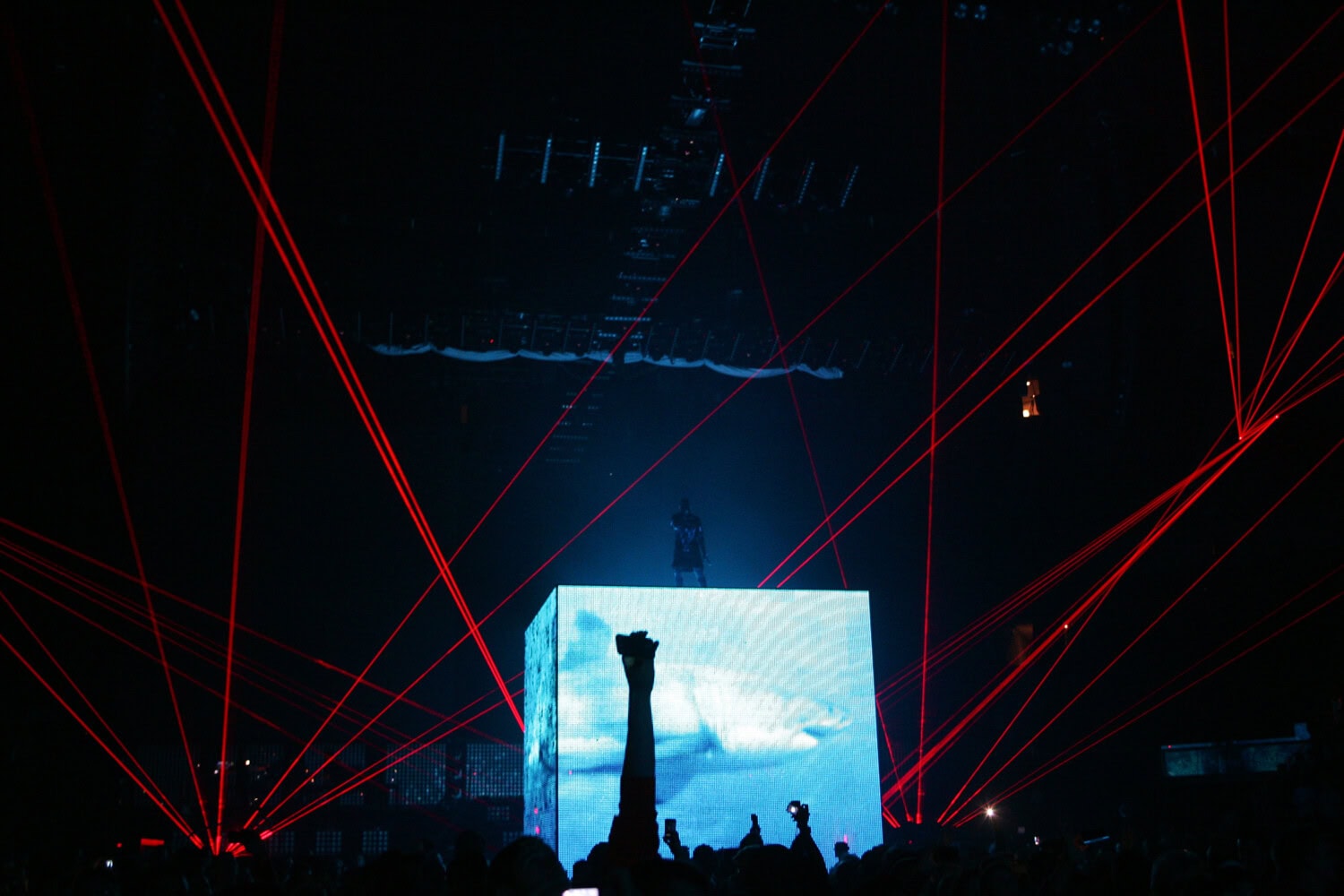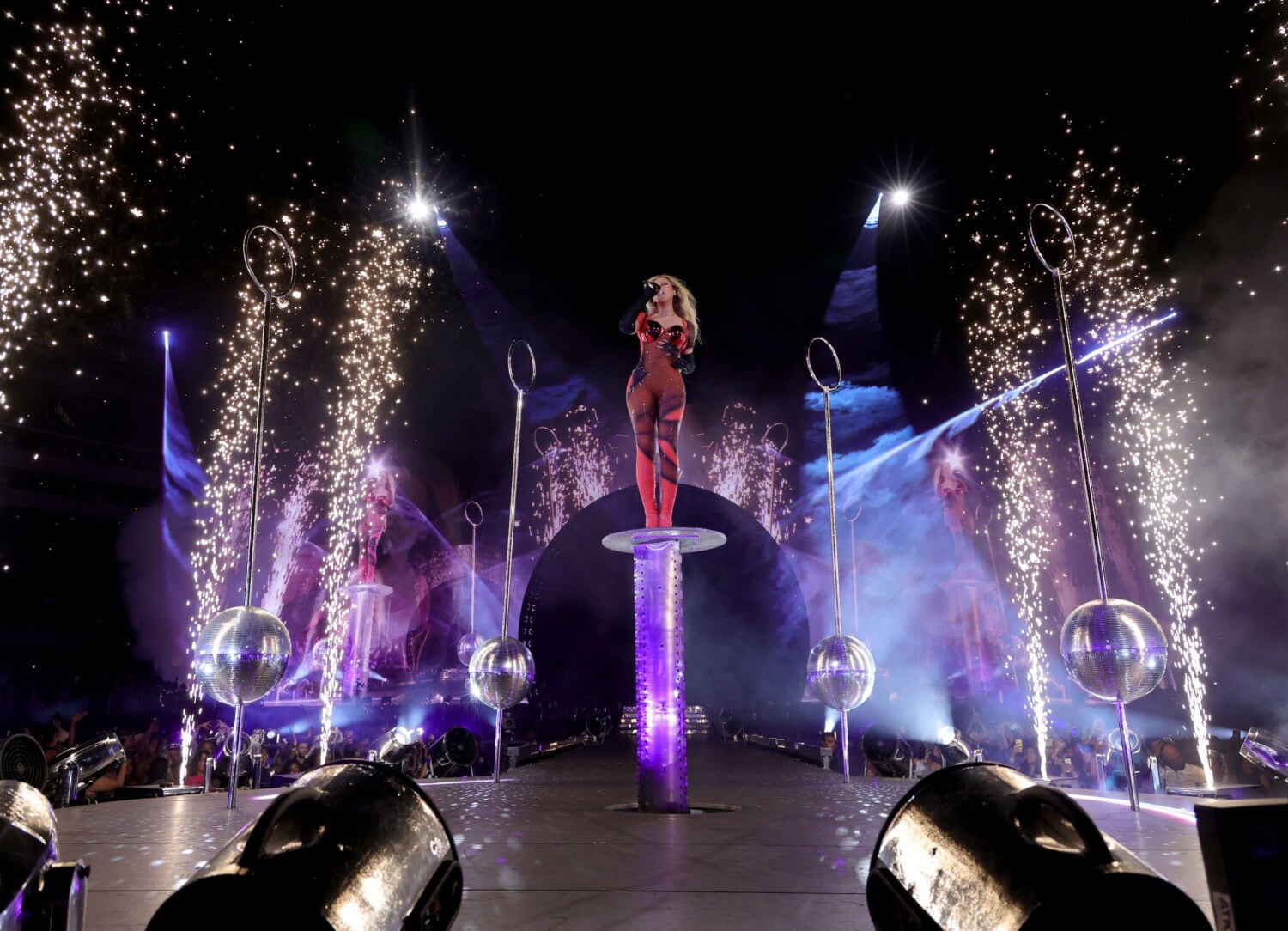The FTC has introduced a “click-to-cancel” rule requiring businesses with automatically renewing subscriptions, such as streaming services and gym memberships, to make cancellation as easy as signing up online. Most provisions will take effect within the next six months. A win is a win!
A peek into today’s edition:
- The evolution of tech-infused concerts
- Tech Byte: new devices from Amazon, Apple, and Meta.
- Sphere is headed to Abu Dhabi
The Tech Legacy of Jay-Z and Kanye’s “Watch the Throne Tour”

Jay-Z and Kanye West changed the game with their Watch the Throne global tour.
Between October 2011 and June 2012, the rap duo performed nearly 60 shows across North America, Europe, and the UK. The tour is remembered for more than Jay-Z and Kanye’s undeniable chemistry on stage and cultural impact across the hip-hop world. The tour’s aesthetics, from stage visuals to fashion, incorporated luxury branding, art influences, and high fashion, reflecting the pair’s penchant for merging art with music.
Most notably, the Watch the Throne Tour shaped how future tours integrate technology, visuals, and storytelling into live music experiences. The stage design featured a main stage and two large moving cubes that elevated into the air with visuals projected on them, creating a visually immersive experience. The show often began with Jay-Z and Kanye emerging on the cubes.

The early use of 3D video projection and LED screens on stage raised the bar for live concert production. The stage’s digital transformation included transparent curtains that acted as a screen for visuals from a projector. The tour was also the first interactive concert to integrate tech that allowed select users to watch exclusive live webcasts and behind-the-scenes videos via an entertainment platform called VOYR. VOYR’s exclusive concert footage was one of the only ways the tour was promoted, with little to no marketing efforts ahead of its premiere. Still, the Watch the Throne Tour grossed around $75 million due to its tech-forward production value.
Kanye brought tech to his Yeezus tour with projection mapping and 3D visuals, while Jay-Z’s 4:44 tour leverages rotating cubes that displayed high-definition visuals synced with his performance. The pair’s influence doesn’t stop there, as tech has taken center stage on musical tours today.
How Tech Takes the Stage Today
Much like during the Watch the Throne tour, artists are integrating more technology into stage shows through advanced sound design, lighting synchronization, and real-time effects. Artists use AI-driven instruments and controllers that interact with visuals or lighting, allowing for dynamic, spontaneous performances. Interactive screens and holograms are used more to create immersive, cinematic backdrops.
Recently, artists like Sabrina Carpenter, Usher, Billie Eilish, The Weeknd, and Taylor Swift have performed on technologically advanced stages that elevate production value and enhance the fan experience.
Here are a few more examples of how artists harness cutting-edge technology to elevate their stage productions on tour.
ODESZA’s The Last Goodbye Tour
Total Revenue: ~$35.8M
ODESZA is known for producing concerts that feature multi-sensory experiences, powerful beats, advanced visuals, pyrotechnics, and dynamic lighting effects. The electronic duo’s The Last Goodbye Tour featured thousands of individually controlled lights that created various patterns and effects. The tour also had a multi-channel sound system for surround sound and interactive elements like LED wristbands. ODESZA’s live performance synchronization across the board is executed by Luke Tanaka, the creative and visuals director for ODESZA live, who works closely with the group’s lighting designer to operate the lighting and video elements live during every single show.

Beyonce’s Renaissance World Tour
Total Revenue: ~$579M
Beyoncé‘s Renaissance World Tour featured advanced lighting systems and large-scale LED screens to create dynamic visuals that complemented her choreography and music. Live video feeds allowed fans to engage with every detail of the performance. The tour is also remembered for its iconic visual display at the beginning of Beyoncé’s performance, which featured a multi-layered LED screen that displayed a vibrant, abstract animation inspired by the aesthetics of the Renaissance era.
Travis Scott’s Astroworld Tour
Total Revenue: ~$60M
Travis Scott‘s Astroworld Tour is renowned for its innovative use of technology, featuring a massive custom-built roller coaster on stage that cemented the futuristic and nostalgic feel of his performance. The production included extensive LED screens and elaborate lighting designs synchronized with his music, enhancing the visual spectacle. Pyrotechnics and a surround sound system further elevated the energy of the performance, transforming each show into a theatrical experience.

Big Tech companies are launching new devices to keep their legacy tech product lines alive. Apple announced a new iPad mini after a four-year hiatus; the Meta Quest 3S arrived on Oct. 14 as Meta’s most cost-efficient VR headset; and Amazon released a new fleet of Kindle devices, including its first-ever color Kindle.

- Sphere Entertainment and the Department of Culture and Tourism in Abu Dhabi announced plans to build the world’s second Sphere venue in the United Arab Emirates capital. The new entertainment landmark, set to open in 2030, will be modeled after the original 20,000-capacity Sphere in Las Vegas.
- Apple Music released a new feature that lets artists transform their concert set lists into playlists. The new Set List feature also lets musicians share upcoming tour dates and other content from their concerts.
- This week, Instagram introduced profile cards, aka digital business cards, to make it easier for users to connect and share their profiles. The customizable, two-sided card includes your bio, profile picture, links, music, and a QR code.
- The NFL announced its seventh annual Big Data Bowl in partnership with Amazon Web Services, where it challenges the sports analytics community to analyze pre-snap data and provide insights using its Next Gen Stats platform. Participants can compete for a $100,000 prize and the opportunity to present their insights to NFL teams at the 2025 Scouting Combine.
- The NBA introduced new features to its app ahead of the 2024-25 season, including multiview on NBA League Pass, allowing fans to watch up to four games simultaneously. The updated app also offers AI-powered game insights, personalized content, customizable viewing options, the return of the “Pass the Rock” series, and more exclusive programming.
- Meta worked with Blumhouse to let select filmmakers test its AI-powered video generator Meta Movie Gen. The filmmakers used the platform to generate videos and give Meta feedback before Meta Movie Gen’s public launch.

During Tesla‘s product showcase last week, the company used human operators to remotely control a group of Optimus robots. I have so many thoughts, but this automatically makes me think the tech behind the bots is nowhere near ready. To this end, I’m going to bet that Tesla won’t begin mass-producing Optimus robots by 2027, as Elon Musk claims. With Musk’s history of ambitious timelines, I’m confident there will be multiple delays.